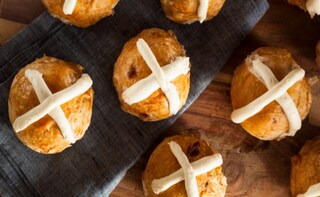Among the little pleasures in life, my favourite is relishing this sweet little bun; beautifully plump – an outcome of passionate baking, loaded with a mix of candied fruits, spiked with aromatic spices and laced with the famous cross on its glistening top. Cut a slice, smear a generous dollop of butter or sweet berry preserve and take a bite. That is pure bliss.
Advertisement
Advertisement
Advertisement
Advertisement
For the latest food news, health tips and recipes, like us on Facebook or follow us on Twitter and YouTube.
Advertisement
Tags:
